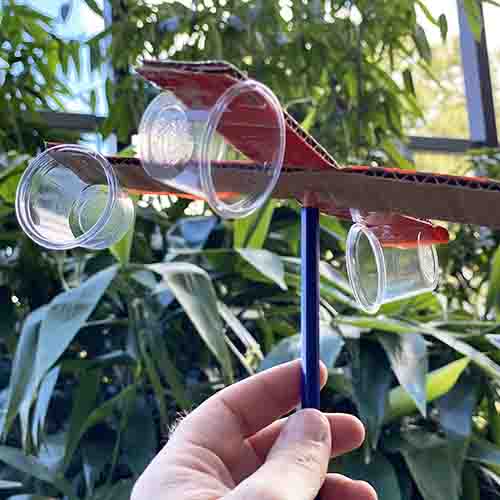How to Preserve and Take Care Of Your Anemometer to Make Sure Durability
How to Preserve and Take Care Of Your Anemometer to Make Sure Durability
Blog Article
Anemometers Introduced: Understanding Their Value in Environmental Monitoring and Safety Measures
The role of anemometers in ecological surveillance and safety and security steps is often taken too lightly, yet their value is undeniable. These instruments have a lengthy background rooted in clinical questions and technological advancements, progressing to become essential devices in numerous fields. From weather forecasting to air travel safety, anemometers play a crucial duty in offering accurate information that educates decision-making processes and enhances general security. Comprehending the intricacies of anemometers reveals a globe of vital insights that are essential to our understanding of the atmosphere and the procedures we require to ensure safety.
Background of Anemometers
The advancement of anemometers can be traced back to the ancient human beings where simple wind gauging tools were first used. One of the earliest recognized anemometers was the hemispherical mug anemometer designed by Leon Battista Alberti in the 15th century.
Over the years, improvements in modern technology led to the growth of even more contemporary anemometers, including ultrasonic anemometers and laser Doppler anemometers, providing enhanced precision and effectiveness in measuring wind rate and instructions. The history of anemometers showcases an impressive journey of development and progress in the area of meteorology.
Sorts Of Anemometers
Throughout the field of weather forecasting, various types of anemometers have actually been developed to accurately determine wind speed and direction. Sonic anemometers make use of ultrasonic signals to determine wind speed and instructions precisely. Hot-wire anemometers run based on the concept that the cooling effect of wind on a warmed cord is proportional to the wind rate.
Applications in Meteorology
Having actually reviewed the numerous kinds of anemometers used in meteorology for measuring wind speed and instructions, it is important to explore their functional applications in the field. Anemometers play a critical role in weather forecasting by giving real-time and exact data on wind conditions (anemometer). Meteorologists use anemometers to keep an eye on wind rate and direction to forecast weather patterns, problem warnings for severe weather events like tornados, hurricanes, and cyclones, and evaluate weather for aeronautics safety and security
In weather forecasting, anemometers assist in recognizing local and local wind patterns, which are vital for predicting weather adjustments and establishing weather patterns. These devices are additionally made use of in research study to study microclimates, city warm islands, and air pollution dispersion. In addition, anemometers are utilized in agriculture to maximize crop administration methods, such as irrigation and chemical application, based on wind problems.
Value in Air Travel Safety
An integral facet of guaranteeing aeronautics security hinges on the thorough tracking of wind problems using anemometers. Anemometers play an essential role in aeronautics Discover More Here by supplying real-time information on wind speed and direction, assisting pilots in making notified choices during liftoff, touchdown, and see this website flight. Unforeseeable and solid winds can substantially influence aircraft operations, making it important for aeronautics authorities to rely on exact wind dimensions to guarantee the safety and security of guests and crew.

In the vibrant atmosphere of aeronautics, where even minor modifications in wind rate and direction can have extensive effects, anemometers stand as crucial tools for promoting secure and secure flight.
Function in Environmental Study
Anemometers play an important function in ecological study by giving essential data on wind speed and direction. By accurately measuring wind characteristics, anemometers help researchers go to website analyze the movement of toxins in the air, analyze the influence of commercial exhausts, and forecast the spread of pollutants in the atmosphere.


Conclusion
Finally, anemometers have played an essential role in environmental surveillance and precaution. With a rich background and numerous kinds readily available, these tools have actually been commonly utilized in meteorology, aeronautics safety and security, and environmental research study. Recognizing the relevance of anemometers is necessary for precisely measuring wind speed and direction, which is vital for forecasting weather condition patterns, guaranteeing safe aeronautics procedures, and conducting environmental researches - anemometer. Their contributions to these areas can not be taken too lightly.
One of the earliest recognized anemometers was the hemispherical mug anemometer created by Leon Battista Alberti in the 15th century. Over the years, innovations in innovation led to the advancement of even more modern anemometers, consisting of ultrasonic anemometers and laser Doppler anemometers, offering boosted accuracy and efficiency in gauging wind rate and direction. Hot-wire anemometers operate based on the concept that the cooling effect of wind on a heated wire is symmetrical to the wind speed. Meteorologists utilize anemometers to check wind speed and direction to anticipate weather condition patterns, issue warnings for extreme climate events like storms, twisters, and typhoons, and analyze climatic problems for aviation safety.
Comprehending the relevance of anemometers is crucial for accurately measuring wind speed and direction, which is important for anticipating climate patterns, guaranteeing risk-free air travel procedures, and performing ecological studies. (anemometer)
Report this page